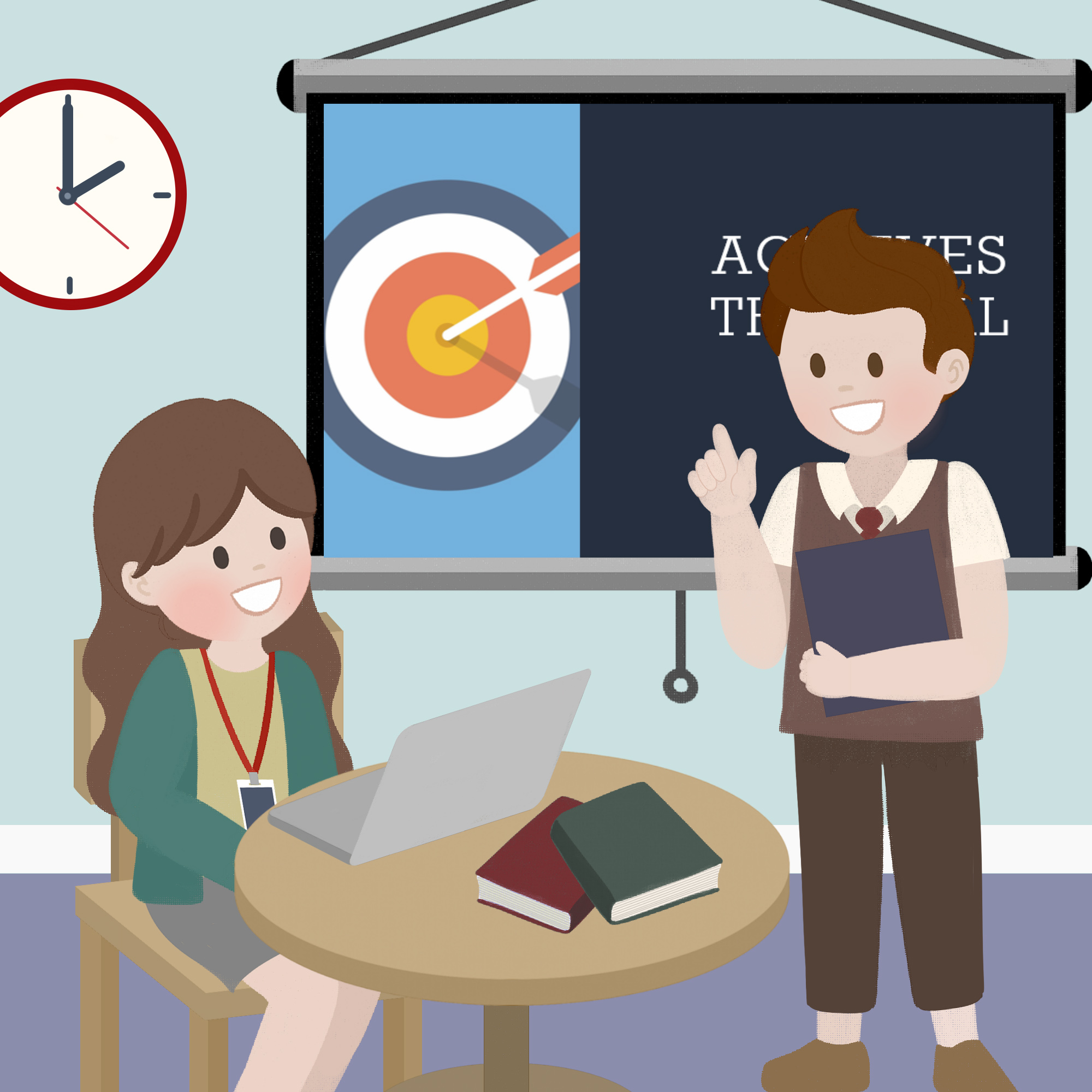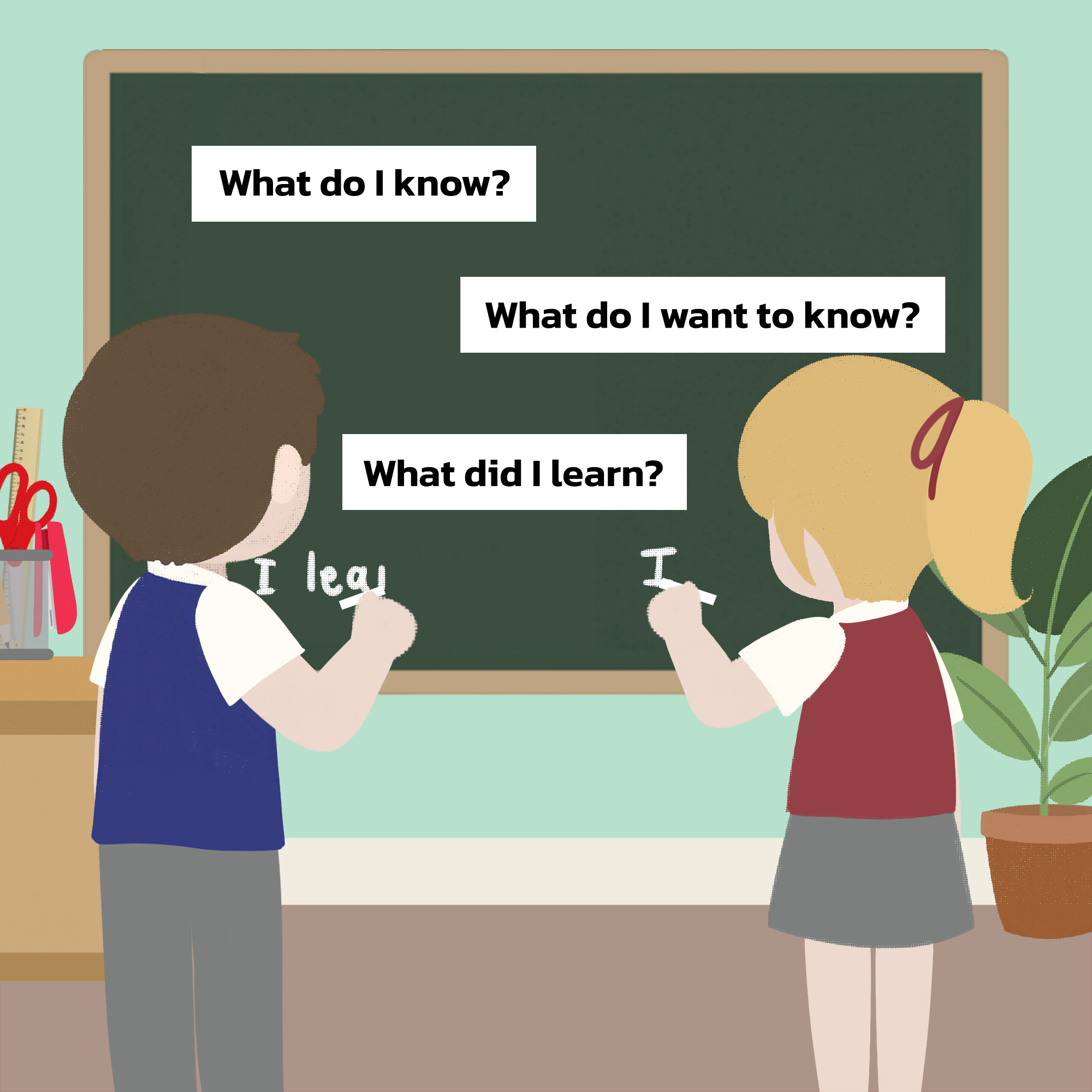An article by Richard James Rogers (Award-Winning Author of The Quick Guide to Classroom Management and The Power of Praise: Empowering Students Through Positive Feedback).
Illustrated by Pop Sutthiya Lertyongphati.
Firstly, I’ll begin with a big hello and a salute to every teacher reading this right now. Many of us taught through the grueling COVID years and made it (unscathed, albeit exhausted) to the other side.
That is an achievement in and of itself.
Those of us who stayed in teaching have shown tremendous resilience. COVID destabilized so many schools and demoralized so many teachers – so much so, that more teachers are leaving the profession than those that are applying for open vacancies.
For those of us who did decide to stick to our guns, post-pandemic teaching has brought with it some new challenges that were somewhat unexpected:
- Children are fed up of doing online tasks, and now expect more human-interactivity in lessons. Teachers need to be more active within their lessons than ever before – we simply cannot get way with setting our kids some work to do whilst we check e-mails and do admin. This kind of dovetailing simply cannot happen anymore.
- AI has been thrust upon us – possibly the biggest challenge to education since COVID
- Many of our students are way behind, since they picked up misconceptions and did not learn deeply enough during the COVID years. Many of us are now trying to teach advanced concepts to children who have little foundational knowledge.
- The ways in which we taught students before COVID are not necessarily the ways we should teach students in the post-COVID years
As a result of these challenges, we need to be more organized than ever before if we are to stay in the game. So, are you ready to level up and become even more efficient? Well, you’re in luck! In this blog post, we’re going to explore five practical ways you can boost your efficiency in 2023 and beyond. Get ready to embrace new strategies, tools, and ideas that will make your teaching journey a breeze. So, let’s dive right in!
#1: Embrace the power of technology (but don’t let it take over)
In this digital age, technology is your trusty sidekick. From interactive whiteboards to educational apps, find tech tools that align with your teaching style and make your life easier. Harness the power of online platforms for grading, communication, and lesson planning. Let technology be your secret weapon in conquering classroom chaos!
- Utilise live quiz apps like Blooket, Quizlet Live, Quizziz, Kahoot! and iSpring Quizmaker to get your students interacting with lesson content. It’s important that the teacher is active during these tasks too – comment on scores along the way, use humor and walk around the classroom to help students.
- Use G Suite tools to aid with collaborative project work. Google Sheets, Docs, Sites and Slides all allow students to create high-quality outputs in real-time, in groups. Think of ways to utilize these tools to your advantage. Some ideas are given here.
- Utilise Virtual Learning Environments to share resources and communicate with your students. Google Classroom, Firefly, Moodle and Class Dojo are all great platforms that I highly recommend. Share slides and summaries ahead of time if you can – this will allow your students the opportunity to read ahead.

Technology warning – do not replace human teaching with technology-driven teaching. Whilst there’s so much great software out there that will literally teach children all they need to know about a subject or topic, the children attending school today do not want this. They’ve had enough of educational software as they were heavily exposed to it during the COVID years when they were learning remotely. It’s back to basics, I’m afraid – paper-based tasks, spatial learning and active engagement are in-vogue and will be for some time to come.
#2: Streamline Lesson Planning
Create a system that saves time and energy during lesson planning. Organize resources, templates, and activities in a central location for easy access. Collaborate with fellow teachers and share ideas to lighten the load. Remember, a well-planned lesson is a successful lesson! Read my top 7 strategies for efficient lesson planning here. Here’s a quick summary:
- Plan in a way that works for you personally: The methods of lesson planning that I use personally have changed and evolved over the course of my career, just as I have changed and evolved too. The methods I use work for me, and that allows me to express myself in the best and most natural way possible.
- Always get a quick starter activity ready: You’ll often find that there are many great workbooks full of activities and worksheets published and ready for you to use. A small investment of money in resources like this can save you loads of time that you may have spent making resources from scratch.
- Always include a quick plenary: This can be as simple as getting the students to stand at the front of the class and do some quick-fire questioning, playing a learning game or even getting groups of students to verbalize their own summary.
- Keep your plans and reuse them year after year: There’s no point in reinventing the wheel. Keep your planners safe and organised and use them again and again when you teach the same or similar content. Modify as you go along.
- Look online for Schemes of Work, Programmes of Study and lesson plans that other people have created: You’ll be surprised at the wealth of information available. I’ve personally done this many times in the past. A quick search on a search engine can pull up many documents that you can use, modify and change to suit your own lesson planning.
- Use published Schemes of Work to assist you: All examination boards produce Course Guides or syllabuses, and some will even provide Schemes of Work. Use the content from these to inform your lesson planning, particularly if you’re filling in an ‘Objectives’ or ‘Learning Outcomes’ section.
- Take a long-term view: If you teach students who will take exams in May, for example, then you should know which exact topics you’ll need to cover each month in order to give you enough time to do revision and get the students ready for their exams on time.

#3: Automate Routine Tasks
Don’t let paperwork and administrative tasks steal your precious time. Seek out apps and software that automate grading, attendance, and reporting. Free yourself from the never-ending stack of papers and focus on what you do best—teaching!
Check out these blog posts and sites for some great ideas on how to automate some of your routine work:
- Automated schools: 7 school processes you can automate [Jotform, January 2023]
- 6 Ways to Use ChatGPT to Save Time [Edutopia, March 2023]
- EdTech Evolution: Automating Administrative Tasks and Processes Using AI [Educating Adjuncts]
#4: Prioritize Self-Care
I’ve mentioned this point many times before in blog posts and podcast episodes, but I really must emphasize again that we must PRIORITIZE self-care.
When we look after ourselves, we are better able to teach. It’s that simple.
Burnt out, stressed teachers occupy too many classrooms (often through no fault of their own). We must do what we can to counteract the stressors that affect us.
Being an efficient teacher starts with taking care of yourself. Remember to recharge your batteries, both mentally and physically. Get enough sleep, exercise, and enjoy hobbies outside of the classroom. A happy teacher is a highly efficient teacher!
Read more tips on how to be a happy teacher in this great blog post by Jessica Robinson.
#5: Embrace Flexibility
The ability to adapt and be flexible is a superpower in the ever-changing world of education. Embrace innovative teaching techniques, experiment with new approaches, and adjust your lesson plans to meet your students’ evolving needs. Stay open-minded, and your efficiency will skyrocket!

Read this great blog post by Gill Murray (Founder of Alba English Class Online and Homestay) on the topic of being a flexible and adaptable teacher for some great tips you just can’t miss!
Conclusion
We stayed in the profession despite the massive challenges we faced during COVID, yet new challenges have presented themselves since schools reopened. Being a teacher in the post-COVID years is, and is going to be, more challenging than it has ever been before. For those of us who are tired and fed up, we MUST find ways to raise our energy levels so that we can engage our students. Our paperwork, once a task we could partly do within lessons, must be completed in our free periods and our free time – and that requires good organizational systems to be in-place.
On top of all of these new challenges we face professionally, we also find ourselves on a common personal battlefield – that of our wellbeing. Here’s a big newsflash just in case you missed the memo – your school, your district and your government are NOT responsible for your personal mental and physical health and will probably do little to help you anyway. We must prioritize our own happiness and wellbeing. For some of us (me included), this means that everything must change – from how we wake up in the morning, to how we embrace fitness opportunities and get deep, restful sleep.
Forth eorlingas!
Recommended further reading
- Barnum, M. (2023) “The teaching profession faces big post-pandemic challenges – Chalkbeat,” Chalkbeat [Preprint]. Available at: https://www.chalkbeat.org/2023/6/27/23774375/teachers-turnover-attrition-quitting-morale-burnout-pandemic-crisis-covid
We welcome you to join the Richard James Rogers online community! Join us on Facebook and Twitter for regular updates, giveaways of Richard’s books, special offers, upcoming events and news.




















































